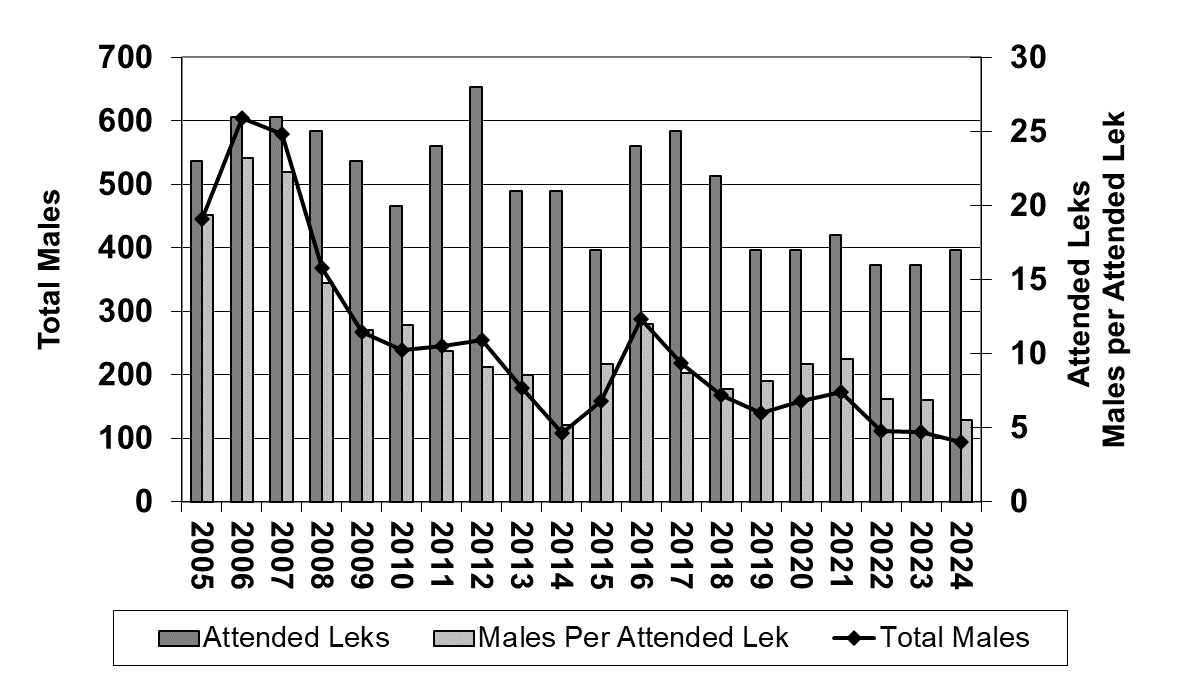Sage Grouse
The sage-grouse is the largest of all North American grouse, and often referred to as sage-hen, sage-chicken, or sage-cock. Both the male and female sage-grouse have a grayish-brown appearance, narrow pointed tail feathers and feathering to the toes. Female grouse are more cryptic in coloration and adult males are distinguished by a dark throat surrounded by a V-shaped patch of white feathers on the neck. During courtship display activities, males extend two skin sacs of a yellow-green coloration found near the throat and possess pronounced yellow eyecombs.
Declines in sage-grouse abundance and distribution in South Dakota are consistent with range-wide trends. Sage-grouse once inhabited the western third of the state outside of the Black Hills, but now primarily inhabit only portions of Butte and Harding counties. A restricted hunting season is available for sage-grouse only when biological survey data meet identified thresholds.
Season Information
Season is closed.
The sage-grouse hunting season recommendation is based on annual population status as determined by spring lek counts. A harvest strategy is included in the South Dakota Greater Sage-Grouse Action Plan, 2022-2026. A minimum of 300 males counted on all leks in Butte and Harding counties for two consecutive years will be used as a minimum threshold before a resident only hunting season will be considered. Access permits will be issued through a lottery drawing system to control the number of hunters and subsequent harvest. A sage-grouse season will not be recommended if the species is listed as threatened or endangered under the Federal Endangered Species Act or State Endangered Species Law. All active leks are surveyed annually when staff time allows. During the most recent hunting season in 2016, the two-day season allowed 40 resident hunting permits with a limit of one sage grouse per hunter. Permits were available through a drawing system. For more information about sage-grouse visit the Sage Grouse Initiative web site.
Population Status
In 2024, there were 17 leks counted for a total of 94 males.



